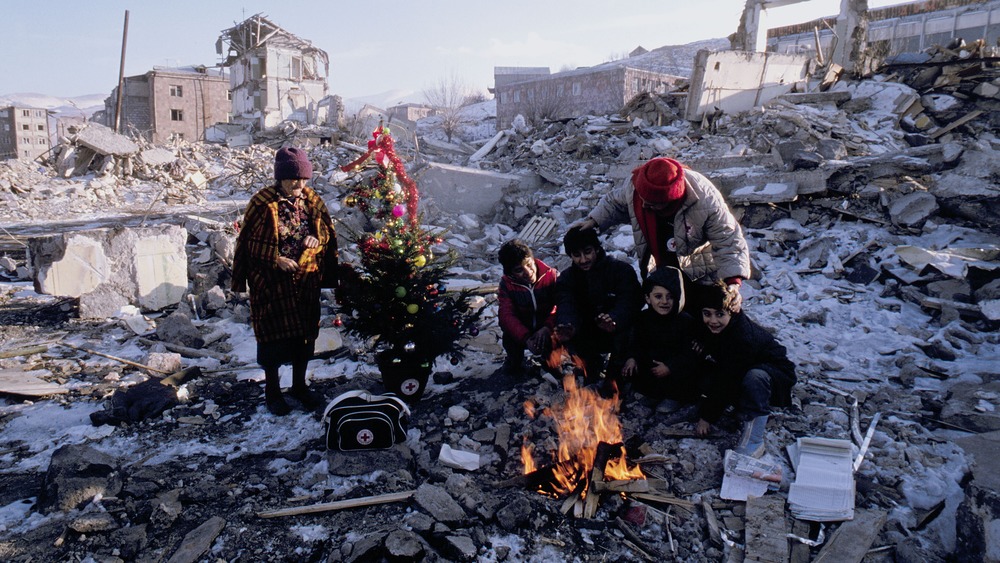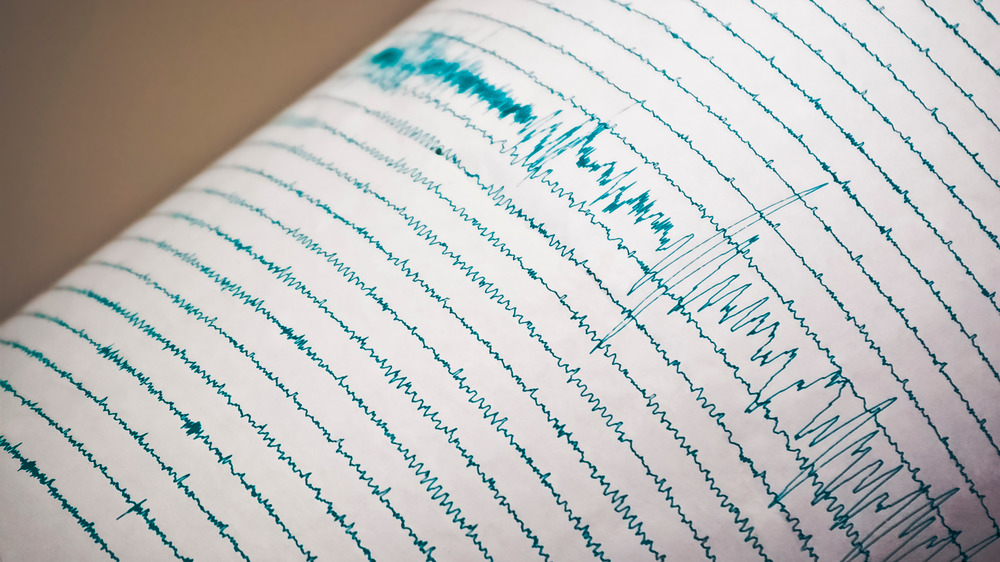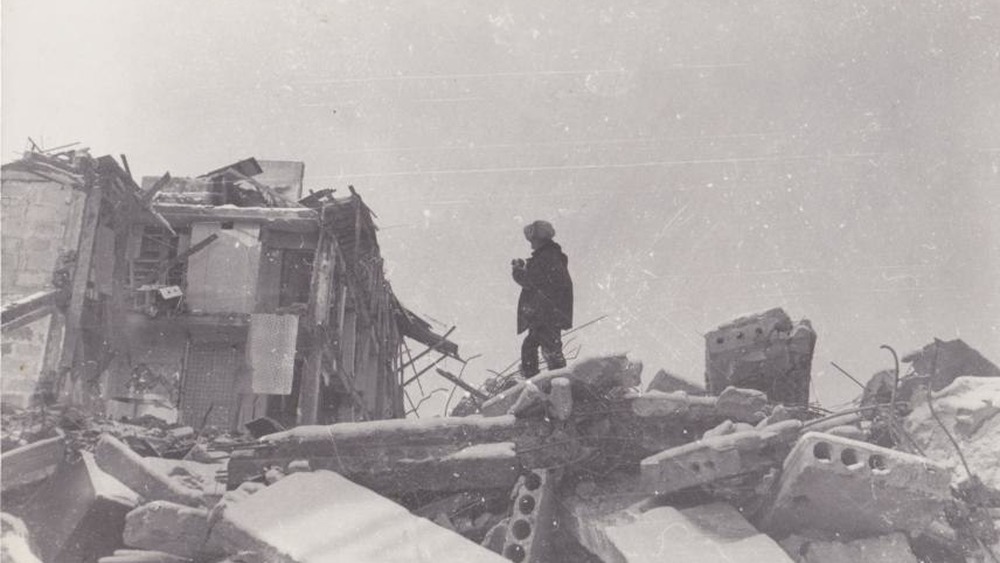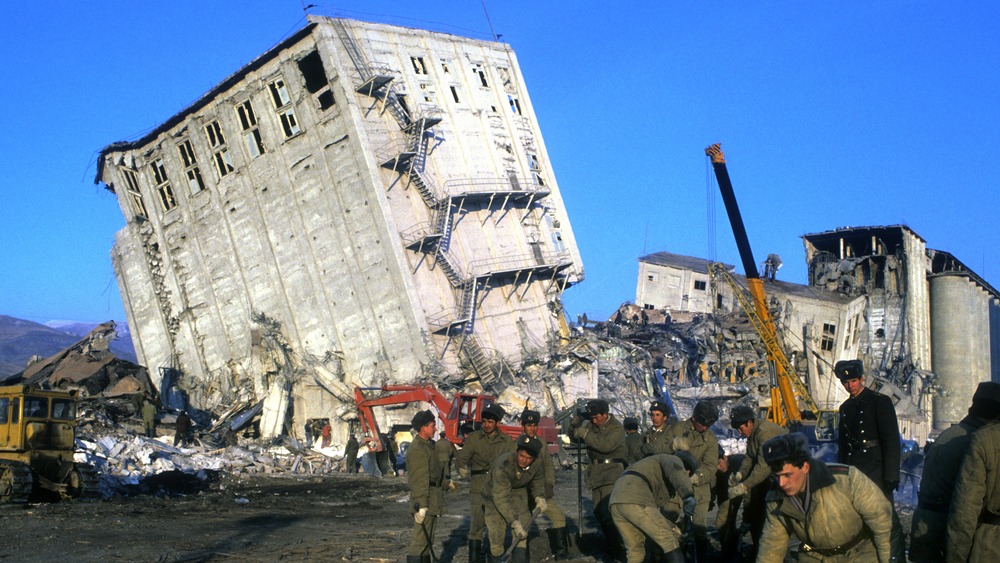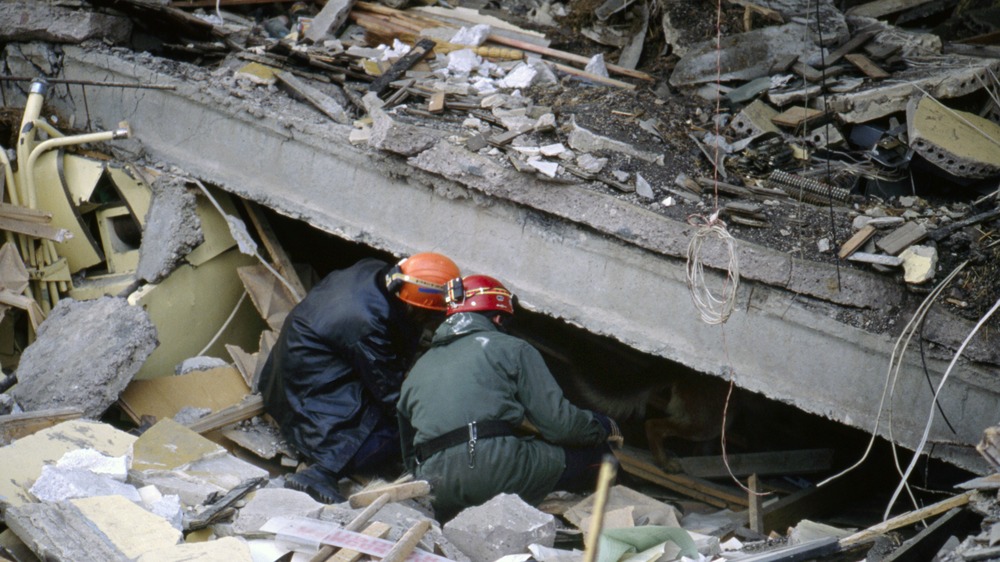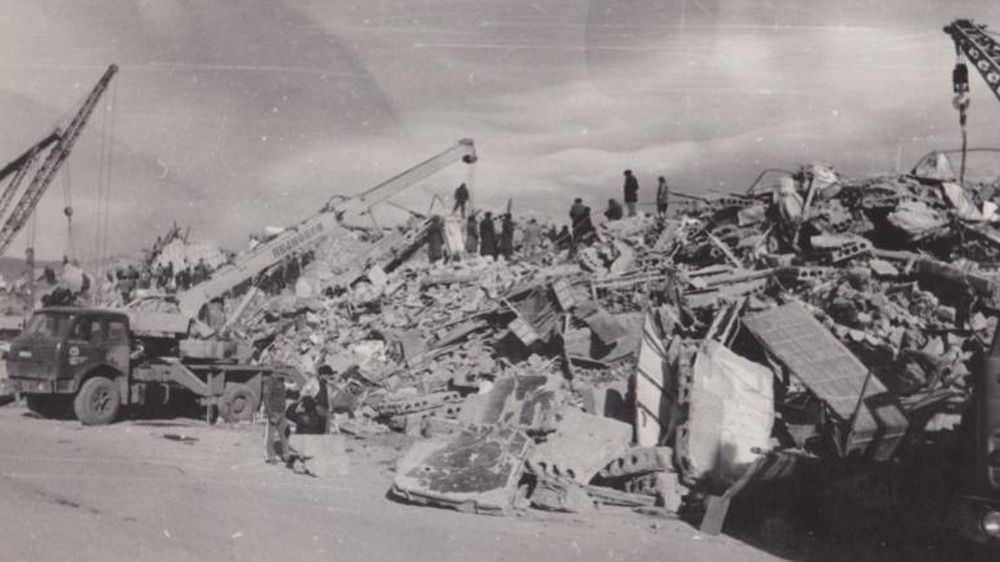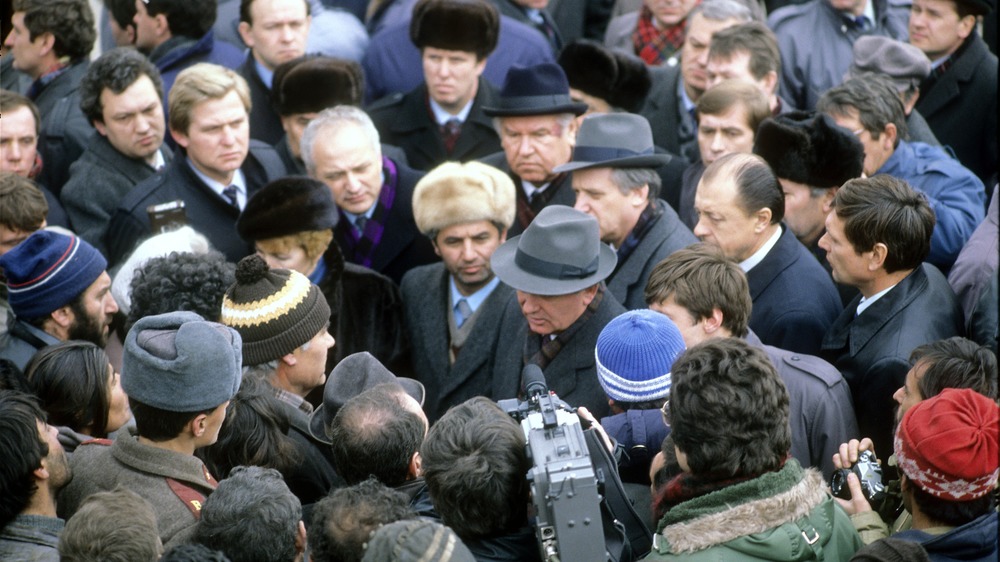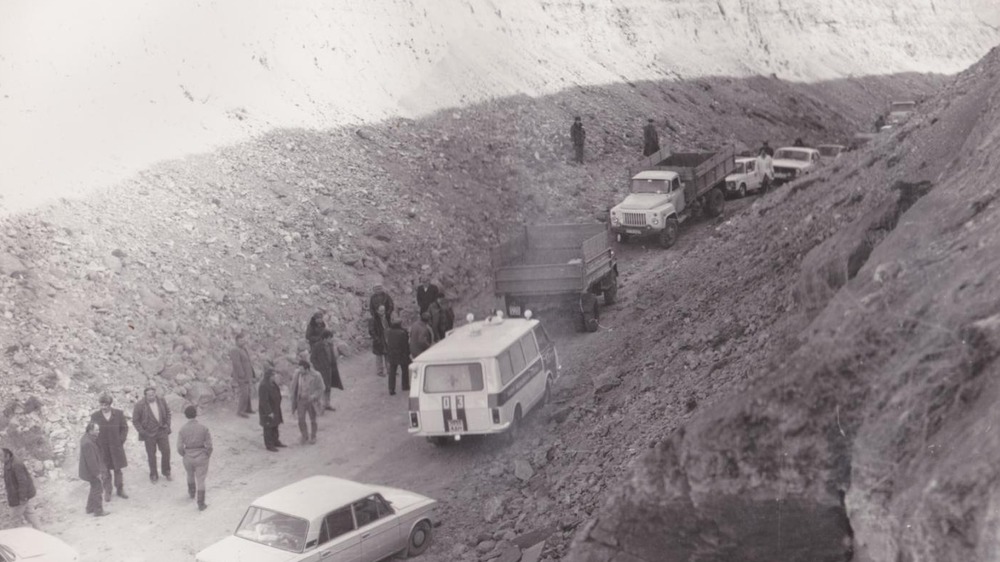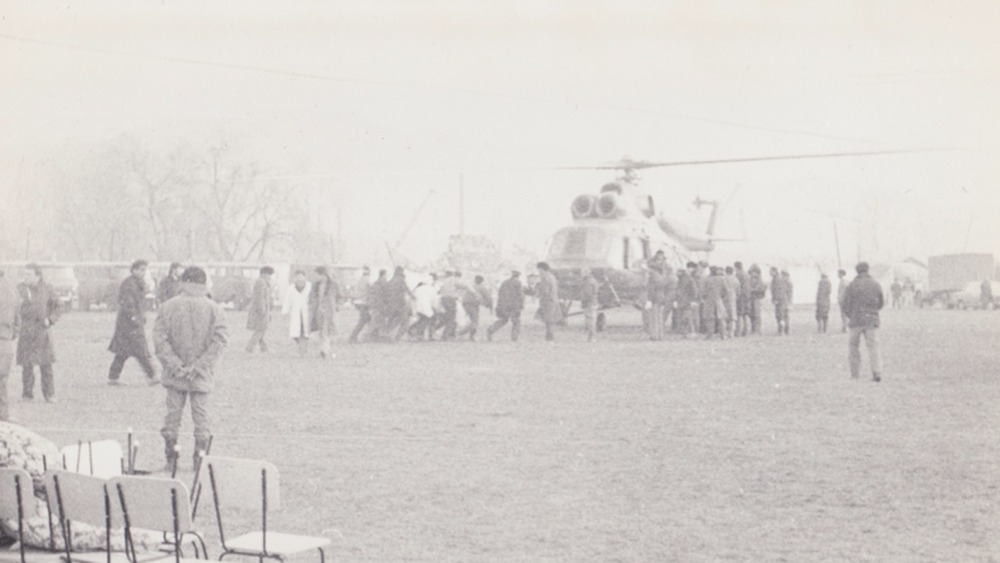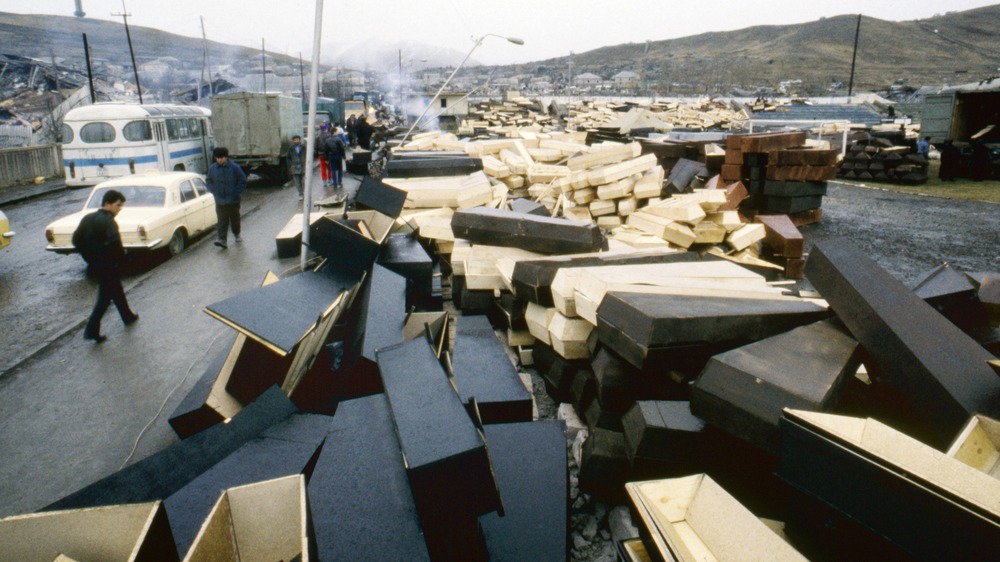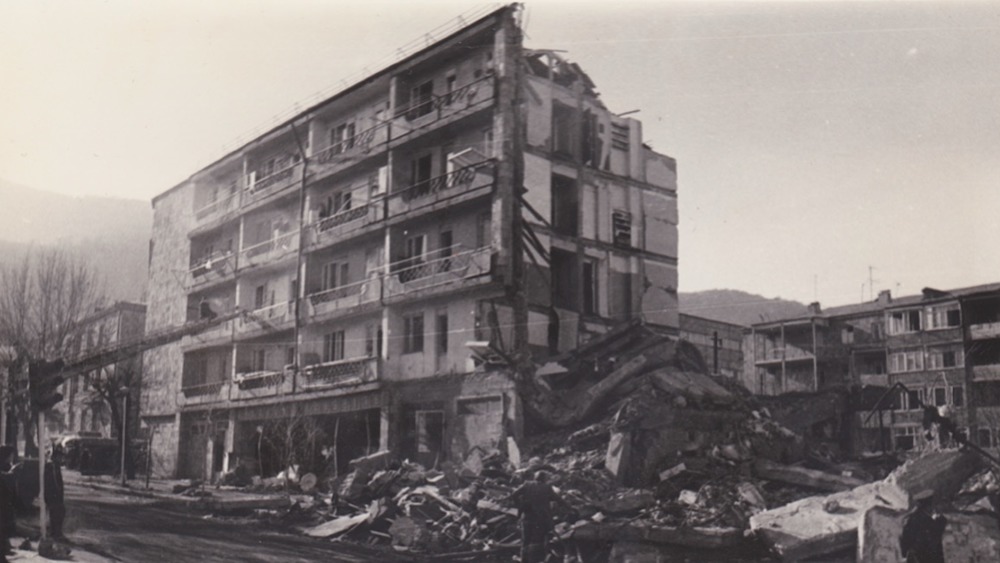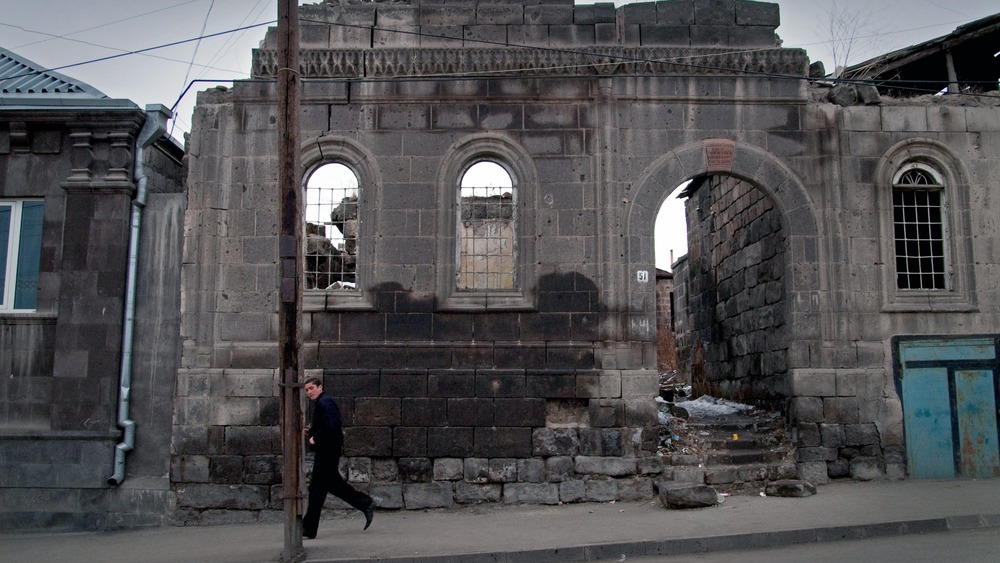What Really Happened With That Huge Earthquake In Armenia?
In the final month of 1988, Armenia was struck by an earthquake that absolutely devastated the northern region of the country and displaced hundreds of thousands of people, throwing many into housing insecurity that's lasted over 30 years.
With the collapse of the Soviet Union three years later, reconstruction became even more of an arduous task. Soviet officials had claimed that restoration would be completed within two years. By the time the Soviet Union collapsed, less than 20% of the lost housing had been rebuilt. Armenian and international foundations have been primarily responsible for building over 20,000 apartments since 1988. However, as of 2020, thousands of people in the region still live in the temporary shelters provided in the aftermath of the earthquake.
While Western media portrayed the Soviet relief operation as inadequate and reflective of the "wider failures of the Soviet system," international relief efforts can be considered to have been equally inadequate due to the non-compatible medical equipment and out-of-date medications supplied. Ultimately, the 1988 Spitak earthquake demonstrated the inadequacies of the entire international humanitarian system. Here's what really happened with that huge earthquake in Armenia.
Seismic activity in Armenia
Armenia is located on the Alpine-Himalayan belt, or the Alpide belt, which is a seismic belt that runs from the Alps to the Himalayas, formed out of the tectonic collision between the Eurasian Plate and the Arabian Plate, per Earth Magazine.
According to Nature, not many seismologists thought that an earthquake as severe as the Spitak earthquake "was possible in the region." As a result, there were few seismic hazard studies done in the region.
But Armenia is not historically devoid of seismic activity and has seen numerous devastating earthquakes. In 735 A.D., the Vayots Dzor Province was struck by an earthquake with aftershocks that lasted for 40 days. Upwards of 10,000 people were reported to have been killed, mostly by the resulting landslides. The city of Dvin was completely destroyed by an earthquake in 893 A.D., with casualties ranging from 30,000 to 70,000.
In June 1679, an earthquake with an epicenter in Garni yielded aftershocks that lasted until October and at least 1,228 people died in the village of Kanaker. Countless churches and mosques collapsed, as did the 1st-century temple of Garni, though it was reconstructed with its original stones.
Throughout the 20th century, there were several earthquakes throughout Armenia, but none caused destruction comparable to the earthquake that struck Spitak in 1988.
The buildup to the December 7th earthquake
On December 6th, 1988, the northern region of Armenia was hit by a magnitude 3.0 earthquake at 3:27 in the afternoon followed by a larger aftershock that measured 5.8 almost five minutes afterward. However, according to Earth Magazine, these quakes didn't receive much attention because few thought that there was a serious seismic risk in the region.
On the morning of December 7th, it became clear that the previous quakes were merely foreshocks to the main quake, which hit at 11:41 AM local time, measuring a magnitude of 6.8-7.0. With its epicenter located in the town of Spitak, the northwestern region of Armenia shook for approximately 30 seconds. The destruction happened so fast that people thought the city had been bombed.
Four minutes later, a magnitude 5.9 aftershock hit. Aftershocks continued in the area for months, some as large as magnitude 5.0. At least 259 aftershocks were recorded from December 22nd to January 1st, 1989. Over 80% of the five-story buildings and over 85% of the nine-story buildings collapsed as a result.
Spitak was almost completely demolished and the towns of Leninakan (Gyumri), Stepanavan, and Kirovakan (Vanadzor) were all greatly affected. The damage extended across an area of over 50 miles in diameter, per BBC. Rumbles from the quake were felt as far as Georgia and Azerbaijan. Overall, 342 villages and 11 cities were damaged.
Devastating effects of the earthquake in Armenia
The effects of the earthquake were absolutely devastating. Between 25,000 and 100,000 people are estimated to have died, upwards of 130,000 were injured, and half a million people were rendered homeless. The economy of the region was also in shambles after the earthquake. According to the Los Angeles Times, 130 factories were destroyed and at least 170,000 people were out of work.
Roughly two-thirds of those who perished as a result of the earthquake were under the age of 18 since the quake struck during the day while most children were at school. Almost 90% of schools were also lost. In one elementary school alone, 400 children were killed.
Innumerable apartment buildings and industrial facilities collapsed or faced heavy damage. Water and electrical supplies were also cut off and although some of the electricity was repaired within a week, according to the Electric Power Research Institute, many residences didn't have their electricity restored for months after the earthquake.
One of several reasons why so many buildings suffered so much damage is that the Soviet Union "had only one building code for the entire territory," regardless of whether or not the building was in a coastal or earthquake region.
Compared to the 2010 earthquake in Haiti which created roughly $7.8 billion in damages, the 1988 Spitak earthquake created $16.2 billion in damages.
Crush syndrome after the earthquake in Armenia
When someone is trapped under tremendous weight from an earthquake or building collapse for upwards of four hours, they become susceptible to crush syndrome. Crush syndrome occurs as a result of toxins being released by crushed muscle tissue. When muscles get crushed, their cells start to leak and die, and their contents, including potassium and myoglobin, start to build up. After the weight has been lifted and blood flow is restored, these cell contents start to flow through the body and can lead to cardiac and renal failure.
According to the Journal of Emergency and Internal Medicine, nearly 600 people experienced acute kidney failure associated with crush syndrome. Over 200 people required dialysis, but even though there were at least 100 dialysis machines, there was "no organized international support structure with appropriate training and deployment strategies." And with inadequate local dialysis infrastructure, "with no preconceived regional or international organizations for renal rescue analysis," by the time it was possible to treat people with crush syndrome, the severe cases had already passed away while the mild and moderate ones had already recovered. Meanwhile, the first rescue teams didn't arrive until December 10, with chances of survival falling under 50% within six hours after an earthquake.
Destruction of hospitals after the earthquake
Hundreds of local medical workers were also injured and killed, and more than "500 medical institutions" were destroyed, making it extremely difficult to treat those who were injured and get first aid to the site on time. In many places, there weren't enough cranes with which to clear the rubble, leaving people to "work with bare hands."
According to "The Earthquake of Spitak, Armenia, and Its Socio-economic Implications" by Johanna Schott and Talin Kalatas, the insufficient design of the buildings meant that almost all medical care stations and hospitals suffered severe damage. In the town of Spitak, out of 36 hospitals, 24 were completely destroyed and 8 were partially destroyed. In some of the cities, the loss of medical staff numbered between 70% to 80%.
According to "The 1988 Earthquake in Soviet Armenia," upwards of 30% of people received "no on-site medical assistance" and many were taken to hospitals in Soviet Georgia or unaffected parts of Armenia. However, weather conditions made air evacuations of victims incredibly difficult, as did damage to railways and roads. Often, it took up to five hours to travel 46 miles in order to reach hospitals in Yerevan.
Many children ended up being sent to the United States for medical treatment, staying there during their recovery until going back to Armenia. Although there was a rumor that orphaned children were being given away to non-Armenian families, the rumor was never substantiated and likely came about due to misinformation and miscommunication.
Gorbachev requests humanitarian aid
President of the Soviet Union Mikhail Gorbachev was in New York City when he received a telegram from British Prime Minister Margaret Thatcher describing what had happened and offering sympathy and aid. After a brief photo-op with President-elect George Bush Sr. and President Ronald Reagan, Gorbachov cut his trip short and flew back to Moscow.
Despite tensions between the Soviet Union and the United States as a result of the Cold War, according to The Washington Post, in response to the earthquake, the Soviet Union asked for and received aid from the United States. The United States and the world responded with a rush of humanitarian aid. Rescue teams and medical supplies were immediately dispatched to Armenia from the United States, France, India, and Cuba. Even Pope John Paul II donated $100,000. The Soviet Union also sent "500 of its best doctors" to Yerevan, per the AP.
Humanitarian organizations like the American and British Red Cross and Médecins Sans Frontières also invested their efforts, but according to Voluntary Action History Society, after an "initial media frenzy and relief operation," news about the earthquake's aftermath was soon absent from the headlines.
On December 11th, Gorbachev visited Leninakan to witness the damage and talk to survivors. However, according to EVN Report, at the time Gorbachev had a turbulent relationship with the Armenian people due to the Soviet Union's refusal to honor Nagorno-Karabakh's annexation referendum in 1988.
The delay of relief crews after the Armenian earthquake
Unfortunately, despite the outpouring of humanitarian aid that the Soviet Union received, Soviet authorities were poorly organized, and as a result, foreign rescue and relief efforts were delayed in their attempts to get to injured people. According to EVN Report, some of the delay was caused by "local bureaucracy wait[ing] for orders from the top." In several cases, relief teams ended up stuck in Moscow because officials simply didn't know where to send them.
According to The New York Times, most of the medical assistance that was sent for the earthquake, unfortunately, ended up being "of little value. It arrived too late for emergency medical treatment." Much of the medications that were sent to Armenia were also "past their expiry date and therefore unusable."
And with so many of the roads destroyed and blocked by rubble, by the time relief crews finally arrived, they were "too late to save many lives," per VAHS. Coupled with non-compatible medical equipment, the relief effort mostly just exposed the poor planning and flaws when it came to international humanitarian aid.
Military troops were also dispatched by the Soviets, but since their training was in post-nuclear blast recovery efforts rather than earthquake relief, they were of little practical assistance.
Multiple plane crashes after the Armenian earthquake
On December 11th, a Soviet cargo jet crashed as it reached the Leninakan airport, resulting in the deaths of 78 people. According to EVN Report, the plane was carrying soldiers and relief supplies, and the cause of the crash wasn't released. However, during this period, the skies were dangerously crowded with planes coming in to supply aid. Several planes would be circling simultaneously, waiting for permission to land.
The next day, on December 12th, a Yugoslav military plane crashed during its attempt to land, roughly 10 miles from the Yerevan airport. According to Associated Press, the plane was carrying medical supplies and tragically all seven crew members died in the crash.
Meanwhile, Gorbachev's government tried to distract people by shifting the blame for the earthquake's destruction onto former leader Leonid Brezhnev rather than address its own shortcomings. Since most of the buildings had high seismic vulnerability, the newspaper Pravda attributed the scale of the destruction to the poor quality standards of buildings made during Brezhnev's term, according to EVN Report.
The inadequacy of rescue efforts
Since electricity and lights were unavailable during the first night, rescue efforts had to be put on hold during the evening and night until there was light. Rescue efforts continued until December 24th, after which the focus turned towards large scale clearing of the rubble. According to EVN Report, in Leninakan, 18,000 people were found in the ruins, "out of which 8,000 survived." And unfortunately, without food or water and the increasingly cold weather of winter, the death toll climbed steadily despite the rescue efforts. For trapped individuals, death rates were 81.4%.
For some, like Ara Tadevossian and his mother, there's a belief that it might have been tragically fortunate not to be rescued in the first few days, simply because everything had been destroyed and it might not have been possible to airlift people to safety earlier.
According to Radio Free Europe, a story published in January 1989 about six men being found 35 days after the earthquake, surviving on canned pickles and fruits, ended up being too good to be true. The story was quickly picked up by the international media, but it soon turned out that the story was fabricated by reporter Artyom Shahbazian in an effort to remind the international community of the disaster.
Although some people were rescued as long as 19 days after the earthquake, thousands succumbed to hypothermia in the freezing winter conditions.
Collapse of the Soviet Union
Although the Soviet Union had said that reconstruction should take roughly two years, by 1989, it was clear that reconstruction was going to take at least nine more years. And according to "The Earthquake of Spitak, Armenia, and Its Socio-economic Implications," by the next year, with the fall of the Soviet Union, the goal of reconstruction by 1998 was once again postponed since the newly independent Armenia realized that it simply couldn't keep the reconstruction program on track.
After the Soviet Union fell, Azerbaijan put a fuel embargo on Armenia in response to the war over Nagorno-Karabakh, blocking a natural gas pipeline from Turkmenistan. Although there were attempts to direct gas pipelines from Georgia, "seven times from late January to mid-March 1993, Azerbaijani saboteurs blew up gas pipelines in Marneuli." Along with the collapse of the Trans-Caucasus electrical grid, Armenia was left with little-to-no heat and electricity for 1-2 hours a day, plunging Armenia into the "dark and cold years."
All of this resulted in a massive disruption of the reconstruction plans. Volunteers from international countries left because of a collapsed infrastructure and lack of construction materials. Labor crews that had come from other Soviet republics simply returned home "without fulfilling their commitments."
Despite international efforts towards rebuilding homes, only about 20% of Spitak's pre-quake homes were rebuilt by 1998. And ten years after the earthquake, almost $8 million in post-quake funds remained frozen in a Moscow bank after the collapse of the Soviet Union.
The failure of reconstruction in Armenia
After the Armenian earthquake, thousands were given temporary shelters made of concrete blocks or old railway cars. However, 30 years later, thousands remain living in temporary houses or "domik" shanties created from old shipping containers.
According to Reuters, in 2008, the President Serzh Sarksyan pledged that rehousing and rebuilding the region would be complete by 2012, but the government keeps claiming delays due to "technical difficulties." And although there are over 400 homeless people on the waiting list for housing, there are over 3,000 people who aren't even on the waiting list.
And although the Red Cross implemented training for emergency-response techniques and first-aid skills in the region, residents in the region are dismissive of these measures, claiming that compared to another earthquake, "unemployment and poverty are more terrifying."
With average winter temperatures of 14 degrees Fahrenheit, residents in Gyumri have to use small portable stoves to keep warm. Many consider the poor living conditions to be responsible for their health problems. With the winter temperatures and domik windows made of cheap plastic instead of glass, sometimes people freeze to death during the night.
Officials think that it could take 10-15 more years to get rid of all the temporary shelters, but there still isn't a plan to ensure housing security for all of the displacement caused by the 1988 earthquake in Armenia and its aftermath.
